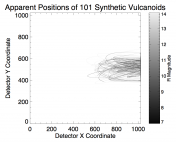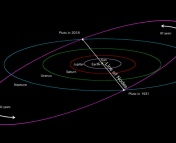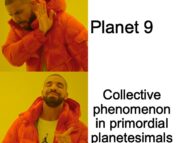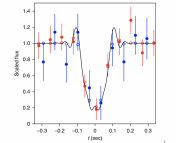Title: Primordial Orbital Alignment of Sednoids
Authors: Yukun Huang, & Brett Gladman
First Author’s Institution: Dept. of Physics and Astronomy, University of British Columbia, 6224 Agricultural Road, Vancouver, BC, Canada
Status: Published on ArXiv, Oct 31 2023
The outermost region of our Solar System is home to a small group of distant objects with orbits that deviate significantly from the rest: Sedna, 2012 VP113, and Leleakuhonua — collectively known as sednoids — have peculiar orbital characteristics which intrigued astronomers and led to questions about the earliest conditions of the Solar System.
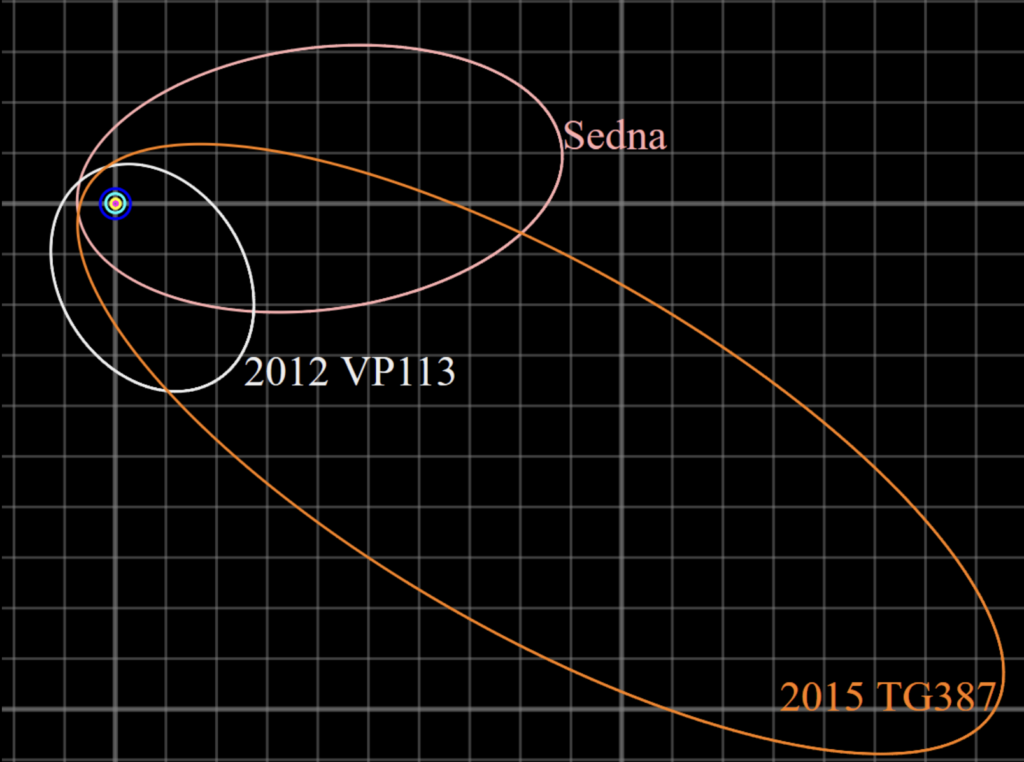
The Remarkable Orbits of Sednoids
Trans-Neptunian Objects (TNOs), located beyond Neptune’s orbit, are a diverse collection of icy bodies, including dwarf planets like Pluto, and make up the Kuiper Belt—a vast region of space starting at Neptune’s orbit extending outward, populated by countless objects often no larger than a few kilometers across. Among these, sednoids are remarkable due to their incredibly high perihelion distances (see Fig. 1), which means they remain very far from the Sun even at their closest approach (Sedna’s perihelion distance is about 80 times Earth’s distance to the sun). This detachment from the gravitational influences of the major planets raises questions about their origins and the forces that shaped their current trajectories.
Today’s authors set out to determine whether the current orbital alignment of sednoids could be traced back to an initial event, such as the possible encounter with a rogue planet or a close stellar flyby, that occurred during the planet formation epoch approximately 4.5 billion years ago. This event would have had the power to imprint a lasting apsidal orientation on these distant objects, guiding them into the peculiar orbits we observe today.
Gravitational Clues from the Past: A Rogue Planet?
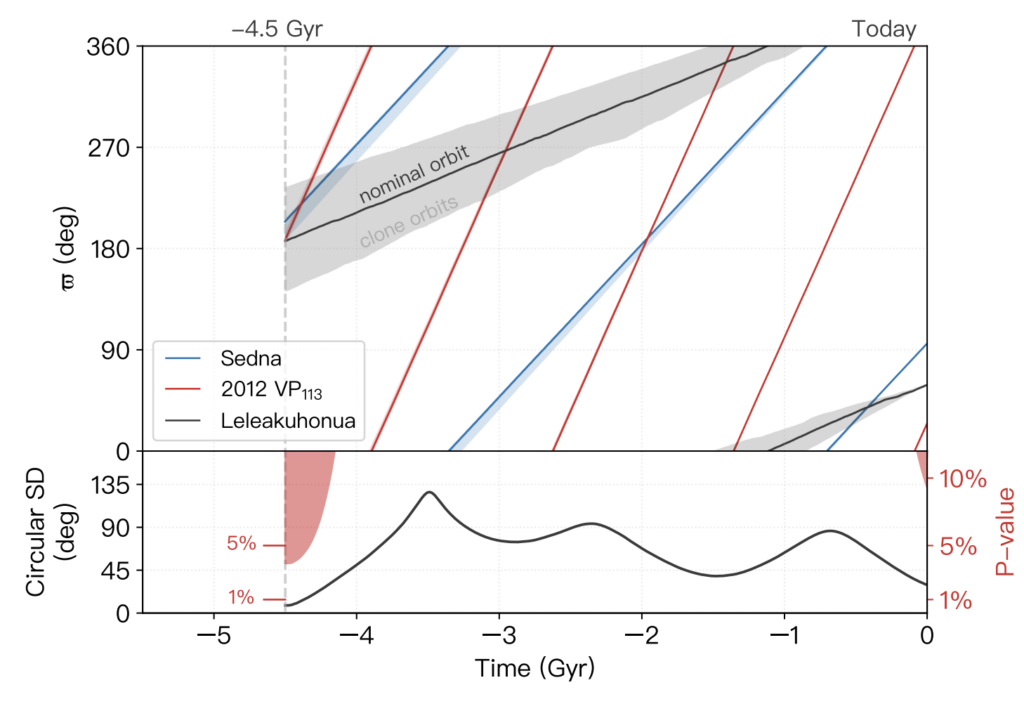
The authors employed computer simulations designed to trace the orbits of the three sednoids backward in time, thus effectively simulating the dynamical evolution of Sedna, 2012 VP113, and Leleakuhonua over billions of years. These simulations calculated the gravitational influences of the Sun and the giant planets—Jupiter, Saturn, Uranus, and Neptune—on the sednoids’ trajectories. To enhance the accuracy of their model, the researchers also took into account a range of initial conditions that reflect the current observational uncertainties in the sednoids’ orbits. This approach allowed them to assess how these uncertainties could influence the backward-in-time orbital paths of these distant objects, ensuring a robust analysis of the sednoids’ dynamical history while minimizing the impact of potential observational biases.
The simulations revealed that 4.5 billion years ago, the sednoids’ orbits aligned such that the lines connecting their closest approaches to the Sun, known as their apsidal lines, converged at a perihelion longitude of 200°—a specific angle measured in the plane of the Solar System that pinpoints the direction where each object is nearest to the Sun in its elliptical path (see Fig. 2). The fact that these apsidal lines clustered so closely in the past suggests that the sednoids did not arrive at their current orbits by random processes alone. Instead, it hints at a shared historical influence or event, potentially during the formation of the Solar System, that nudged these objects into such precisely aligned paths. This event could be the gravitational disturbance from a passing star, which may have been common in the densely packed environment where the Sun was formed.
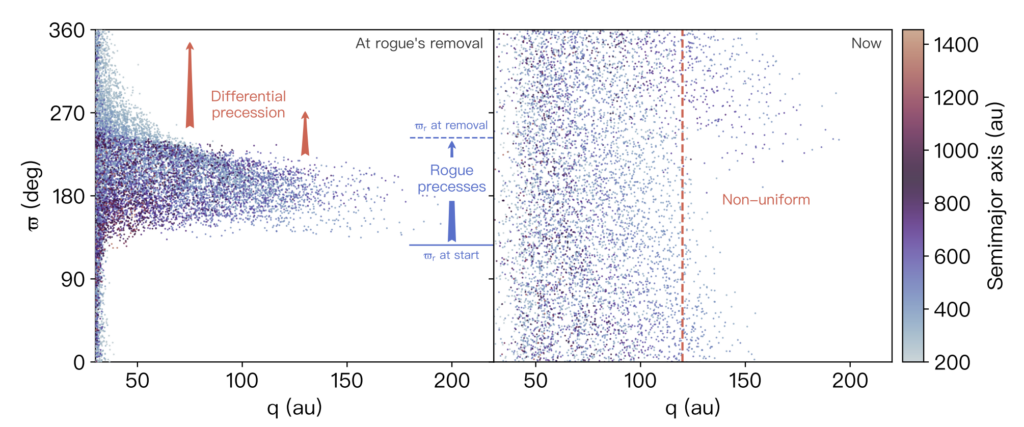
Alternatively, the authors of the study consider the possibility of a rogue planet—a massive planet that was once part of our Solar System but was ejected due to gravitational interactions. This hypothetical planet could have been in a position to significantly influence the orbits of the sednoids, aligning their paths to the observed perihelion longitude of 200° before it was itself cast out into the galaxy as seen in Fig. 3. The concept of such a rogue planet adds a fascinating layer to the history of our cosmic neighborhood, suggesting that our Solar System’s architecture could have been quite different in the distant past.
Bad News for Planet Nine
The discovery of unusual orbital patterns among trans-Neptunian objects led to the Planet Nine hypothesis, which posits a yet-undetected ninth planet far beyond Neptune, influencing the orbits of these distant celestial bodies. However, the apparent one-time alignment of the sednoids’ orbits 4.5 billion years ago suggests a singular historical event, not consistent with the ongoing perturbations expected from a persistent ninth planet. Such a planet would actively sculpt the orbits over time, potentially erasing the signatures of past orbital configurations. The lack of current apsidal clustering supports the idea that today’s orbital architecture of sednoids stems from an early Solar System incident, rather than the continuous presence of a large, undiscovered planet.
Future Discoveries and Solar System Secrets
Nonetheless, due to the intricate nature of the Solar System’s dynamics, a more comprehensive dataset is essential to substantiate these findings. The advent of advanced telescopic technology and extended astronomical surveys holds promise for the detection of additional sednoid-like objects. Such observations would be crucial, as they could either corroborate the theory of a primordial event influencing sednoid orbits or compel us to reconsider our current understanding of the Solar System’s evolution.
The study on sednoids offers a glimpse into the conditions of the early Solar System. Their unique orbital alignment could serve as a record of a major event that occurred shortly after the Solar System’s formation. As more data becomes available, we may be able to piece together a clearer picture of our Solar System’s history, from its most chaotic beginnings to its current state.
Astrobite edited by Mark Dodici
Featured image credit: DreamStudio by OpenAi

